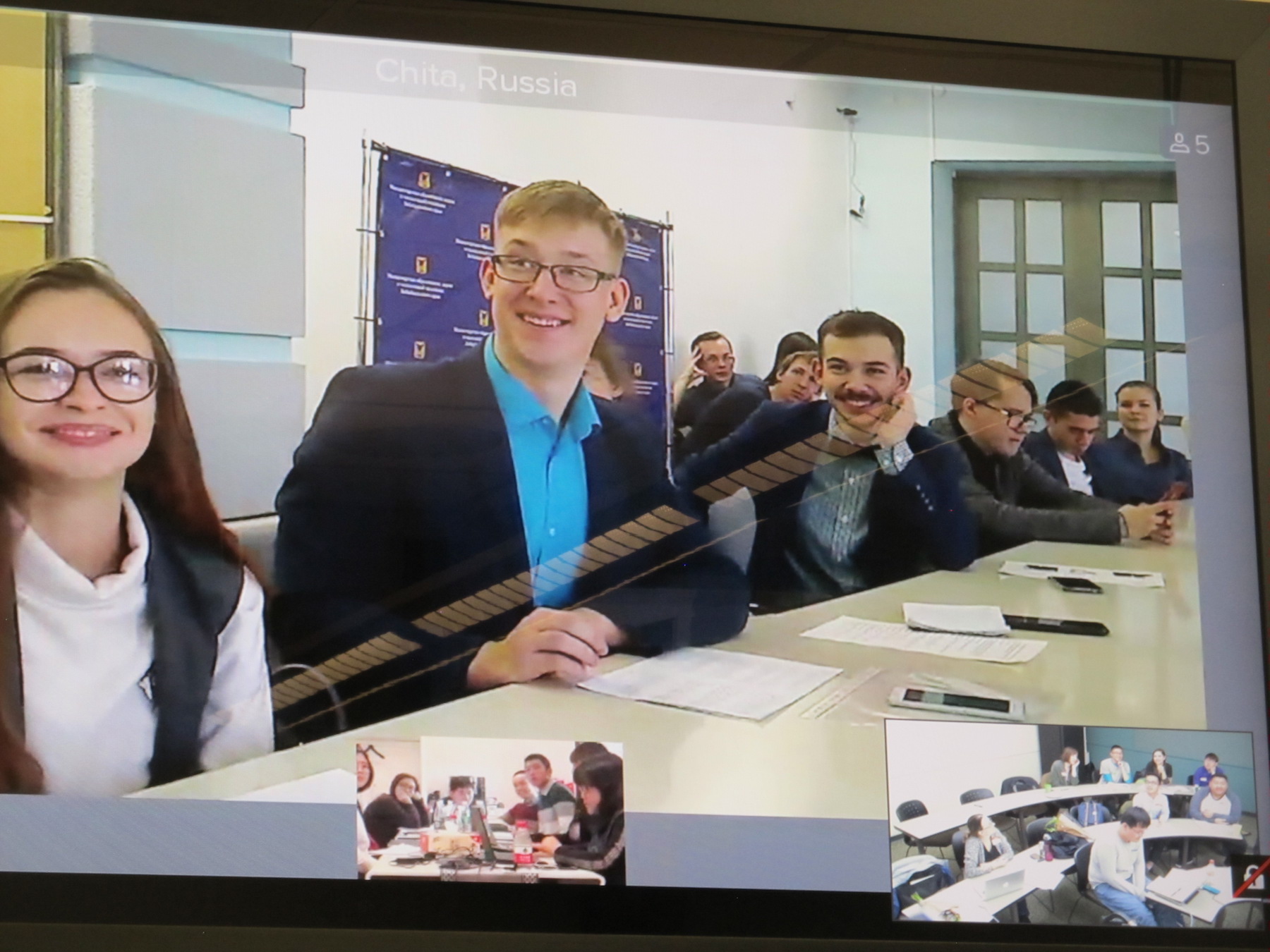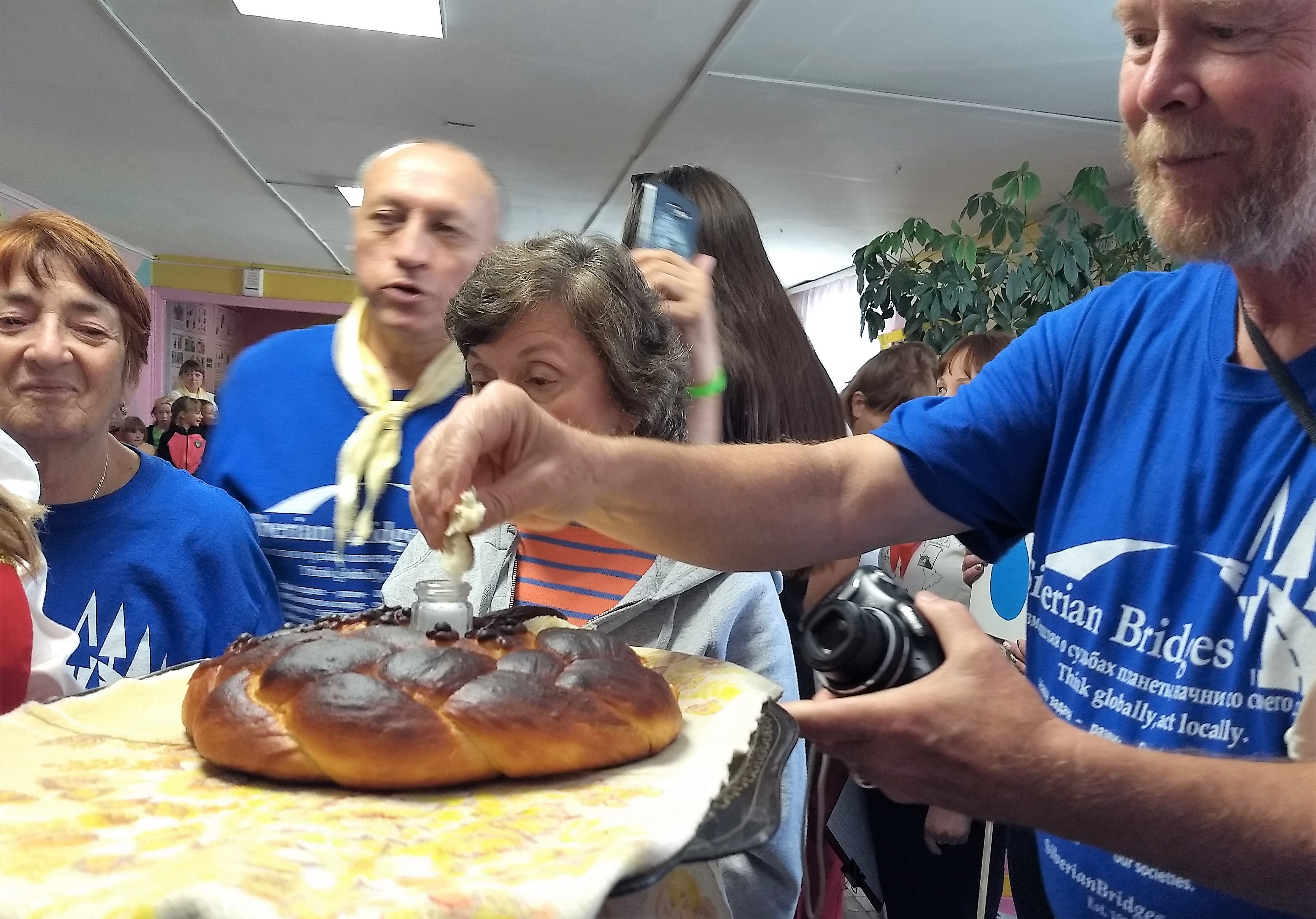My summer in Chita: 7. Petrovsk-Zabaikalsky 2nd of 4
THE DECEMBRIST MUSEUM
The following day, Sunday, we drove into town for a tour of the Decembrist Museum of Petrovsk-Zabaikalsky. After the Decembrist Uprising of 1825–an attempt by a group of aristocrats to depose the Tsar and institute a more democratic and egalitarian system at the moment that Nicholas I was to take the throne–the perpetrators were shipped off to prison in Siberia, mostly in Zabaikalye.

A fragment of the original stockade wall. Note that there are no nails used. This fragment was 11.5 feet high, but the original was 25 feet!
Petrovsk-Zabaikalsky had the biggest prison for the conspirators with 78 prisoners, due to its being more developed. It was the site of an ironworks founded in 1790. By contrast, the Chita Decembrist prison held many less than that, but at that time Chita was only a small settlement. The prisoners were held in solitary confinement for nine years, with three guards allotted for each one. Built on marshland, the prison was generally damp and cold. Ten wives followed their husbands to the prison, living in town to be nearby. After release the prisoners were allowed to live freely in designated locations, but never to return to St Petersburg, ie. they were exiled. However, Alexander II became Tsar in 1855, and he allowed them to come home, though only 19 chose to do so.

Model of the prison. All cells were solitary and originally had no windows. Prisoners were allowed to plant gardens in the yards. They introduced to Petrovsk’s tables and gardens their first tomatoes, cucumbers and onions.
A note about the solitary confinement. It seems not to have been so harsh as we enforce these days. Several of the wives bore children at the time; the prisoners could plant gardens in the prison. They were allowed approved books (mostly in French which the Commandant couldn’t read, so their wives or friends would insert literature inside the covers of say, a cookbook!) They were let off the prison grounds–the prisoners asked to form a school for the locals, but that was denied, so they asked to form a choir at the church which was permitted, and that became a clandestine school. One of the choir members went on to success in university in Moscow, much to the university’s amazement–how could a young man from a small unserved place like Petrovsk-Zavod (the town’s original name) get such an education?–but he never let on that he was taught by the prisoners in order to keep them safe from reprisal.

Statue at the entrance to the museum honoring the first of the wives to join their imprisoned husbands in Siberia. The museum features a sitting room of her original things, including a square grand piano.

At the old cemetery. We are inside the vault of one of the prisoners where his wife and two children are laid. The two girls both died young. This is the Director of the museum and our knowledgeable and enthusiastic guide.



